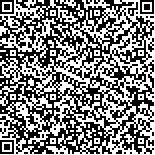下载中心
优秀审稿专家
优秀论文
相关链接
摘要

以摄影测量共线方程为严格配准模型,提出了一种引入针孔成像模拟过程的单张航空影像LiDAR点云配准迭代方法,共分为3个阶段:第一,利用航空影像内参数及初始外方位元素对LiDAR点云针孔模拟成像,生成与航空影像空间分辨率、几何形变相接近且具有相同幅面大小的透视影像-LiDAR深度影像;第二,以梯度互信息作为影像相似性测度依据,实施影像金字塔、分块处理策略实现LiDAR深度影像与航空影像几何变换参数快速估计,进而依据估计参数及LiDAR深度影像、激光脚点投影关系建立LiDAR点云航空影像概略相关;第三,以LiDAR点云影像概略相关下的近似同名像点为观测值,以像点梯度互信息为权重,实施摄影测量空间后方交会计算获得优化的影像外方位元素,生成新的LiDAR深度影像并重复上述过程,直至满足给定的迭代计算条件,实现单张航空影像与LiDAR点云数据的自动空间配准。实验表明,本文方法配准精度达亚像素级且自动化程度高。
This paper presents our research on registering single aerial image to a LiDAR point cloud. Given its high spatial resolution, spatial positioning accuracy, and efficiency in capturing data of physical surfaces, LiDAR has been influenced by and has significantly changed photogrammetry. The fusion of LiDAR data with aerial images offers various applications, such as DOM generation, virtual reality, city modeling, and military training, because of the complementary nature of the information provided by the two systems. However, the two datasets should be geo-registered into a common coordinate frame prior to such integration, which proves to be quite challenging in terms of either automation or accuracy. Such a challenge may be partly caused by inefficiency in the feature measurement or detection stage. For example, the identification of point of interest or straight line feature is viable and reliable in optical images but is difficult to achieve in LiDAR point clouds because of its poor discontinuity measurements. To this end, an automatic geo-registration approach based on "pin-hole" imaging simulation and iterative gradient mutual information computation is proposed to align single aerial image to discrete LiDAR point clouds. The proposed approach takes photogrammetry collinear equation as strict mathematic mode and involves three stages. First, a virtual "pin-hole" imaging process restored from aerial image orientation parameters is established on urban LiDAR point clouds to generate simulated, gray, LiDAR-depth images. The generated LiDAR-depth images are geometrically similar to aerial images. Hence, difficulties in registration caused by distinct differences in spatial resolution, perspective distortion, and size between the two types of data sources can be greatly alleviated. Second, the geometric transform parameters between LiDAR depth images and aerial images are successfully estimated with the gradient mutual information as the similarity measurement. Moreover, the image pyramid partitioning strategy is implemented to accelerate the search for parameter space. In this stage, LiDAR laser feet points can be roughly mapped on aerial image pixels on the basis of the estimated geometric transform parameters and the known projection relations between LiDAR point clouds and their depth images. Third, the photogrammetry space resection algorithm is implemented using all the mapped aerial image pixels as observed values and their gradient mutual information as weight to improve image orientation parameters. The three stages are repeated until the given iterative calculation condition is met and the LiDAR point clouds are registered with single aerial image. Selected airborne LiDAR data and an aerial image with different initial parameter values are tested with the proposed approach. Approximately 0.5 pixel is obtained, indicating a higher registration precision compared with the ICP algorithm. (1) The "pin-hole" simulation imaging and iterative gradient mutual information calculation successfully resolve the difficult heterologous correspondence problem between LiDAR point clouds and optical aerial images; (2) The photogrammetry space resection algorithm can obtain registration parameters with minimum projection errors and reliable precision evaluation by maximizing the use of intensive space information from LiDAR data and recovering optical bundles of laser beams directly.

